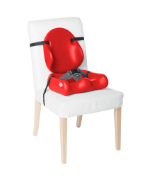Routines and Schedules for Children with Special Needs
Routines and schedules are good for all of us. They keep us on track with healthy habits and can reduce stress by building some predictability into our lives. For children, especially young children, routines are even more important. They help children know what to expect. This can help to decrease anxiety and instill a sense of safety, stability, and confidence. This in turn, can positively impact behavior, sleeping and eating patterns, and ultimately a child’s sense of wellbeing. For children with special needs, routines and schedules can be even more critical.
Why are Routines and Schedules Important for Children with Special Needs?
According to the article Importance of Routine & Structure for Special Needs Children, many children with special needs can feel overwhelmed even by familiar daily activities such as brushing their teeth or having a diaper change. A daily schedule of activities with a predictable routine can make the world seem less chaotic. This is especially important for children with diagnoses such as autism spectrum disorder (ASD) or sensory processing disorder (SPD). The neurological differences found in children with these disorders can result in heightened sensitivity to stimuli that their typically developing peers would have no difficulty with. Heightened sensitivity can lead to anxiety, anxiety can lead to avoidance, and avoidance can lead to meltdowns, even for familiar tasks. How does a routine help? The child knows what to expect which includes an end as well as the beginning. Familiarity with even an unpleasant and anxiety producing activity tends to result in increased tolerance over time. Following a routine in which a preferred activity follows a non-preferred activity can be even more effective as the child can use anticipation of the next activity as a form of distraction.
Transitions
Times of transition, moving from one activity to the next, can be particularly tricky for children with special needs. By offering consistent cues that alert the child that a transition will soon be taking place, the child is gently signaled that a familiar change is about to take place. For example, singing the Barney song “Clean Up, Clean Up, everybody everywhere” can signal that play time is over and it is time to pick up toys and move on to sitting down at the table for snack. Singing is a pleasant way to communicate and engage the child in the change. Knowing what will happen next has the child thinking forward instead of back to the activity they must stop. Even as adults, how do we feel when we are abruptly told out of the blue that something is expected of us immediately and it was not even on our radar. Our knee jerk reaction in many cases would be “sorry, no can do”. Why? We like to feel that we have some control and autonomy in the flow of our lives. Children are no different. Following a familiar transition routine every time, the chances of meltdowns and power struggles are decreased.
A Visual Schedule
Visual schedules are a great way to support routines and structure in any environment. Autism Speaks, an organization that provides advocacy and support for individuals with ASD and their families, defines a visual schedule as a pictorial representation of what is going to happen throughout the day or within a task or activity. A visual schedule helps the child know what to expect and what will happen next which can decrease anxiety. Visual schedules aid children who find it difficult to understand and follow spoken instructions. They can be as simple as two pictures put together with prompts of “First” “Then” or string together several activities such as the visual schedule for a morning routine pictured below.

Routines-Based Skill Development
Another benefit to daily routines comes from the fact that by their very nature, they are repeated day after day. Another thing that requires repetition and practice is the development of new skills. In fact, routines that occur within naturals environments for young children provide the most effective framework to support and sustain Early Intervention strategies for skill building. Early Intervention is a federally funded program that provides services and supports to babies and young children (0-3 years) who have developmental delays or disabilities. When developmental interventions are embedded in children’s regular routines and activities, skills learned are functional and meaningful for children and their caregivers. Repetition offers a consistent platform for progress.
Bedtime
For every child and every family there will be certain parts of the day that will be more problematic than others. Two such times are often mealtimes and bedtime. These times too can be made easier through routine and consistency. In the blog entry titled Sleep and Sensory Processing Disorder, the author states “Humans are creatures of habit and we thrive on a structured schedule.” Helping a child to set their internal clock of sleep/wake patterns (also known as circadian rhythm) is critical for restful and restorative sleep which in turn is critical for quality of life. The author puts forth the following suggestions about setting a bedtime routine.
- Allow your child to participate in setting their bedtime routine
- Create a visual of the bedtime schedule that they can easily see and understand
- During the day, make sure your child gets ample exercise and exposure to sunlight which are strong internal clock signals
- Incorporate sensory-friendly activities into the bedtime routine
The Other Side of the Story
Routine, structure, and schedules can improve a child and family’s sense of wellbeing, improve a child’s ability to regulate their own behavior and help them build greater independence and confidence in life skills. But, as in all of life, there is a careful balance to be struck. Routine, structure, and schedules for some children with special needs can foster a debilitating resistance to change. Increased rigidity in routines can cause this resistance to be heightened. Every child is different. Every family is different. Never hesitate to reach out to professionals with your questions or concerns about your child’s behavior. Your child’s pediatrician is a great place to start and they can help put you in touch with additional resources.


















